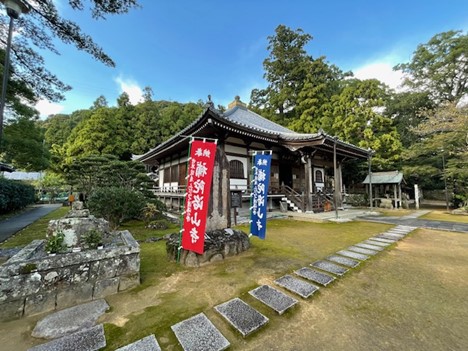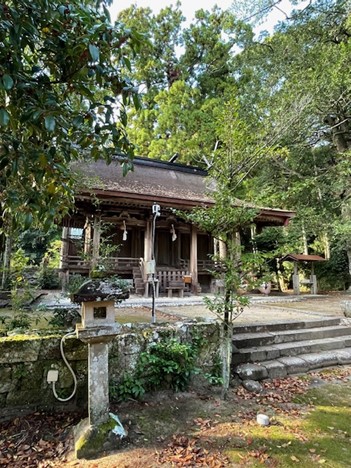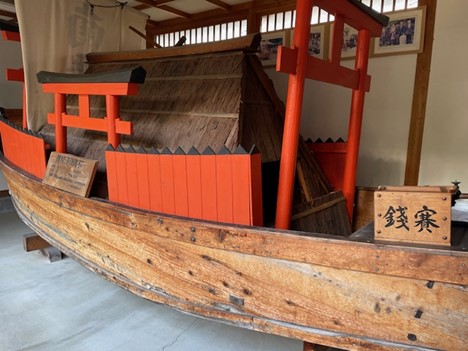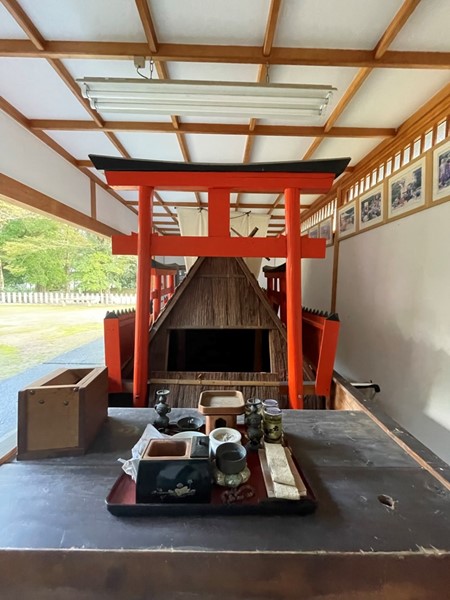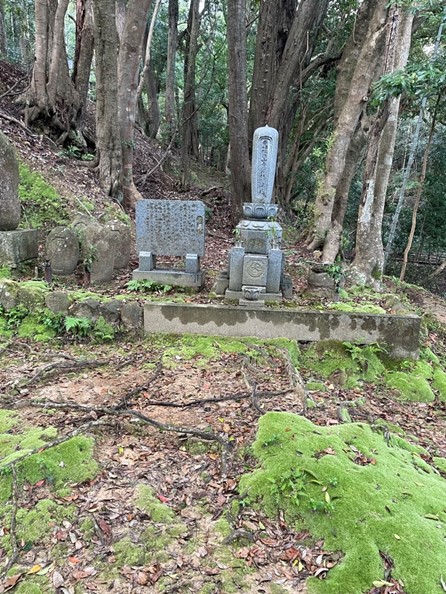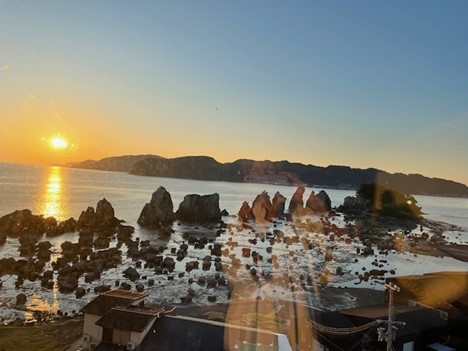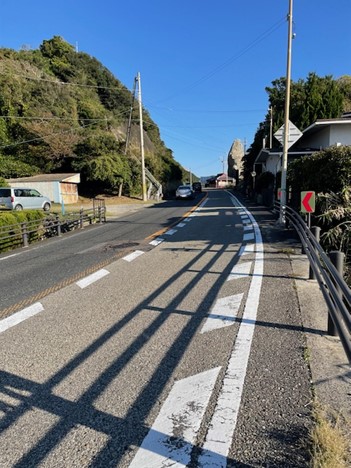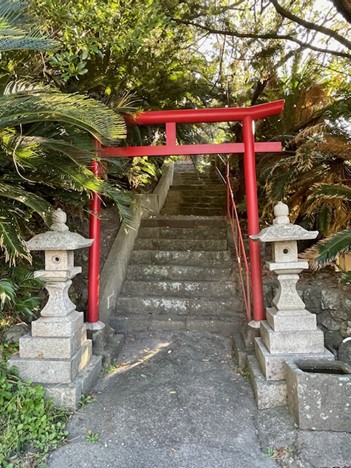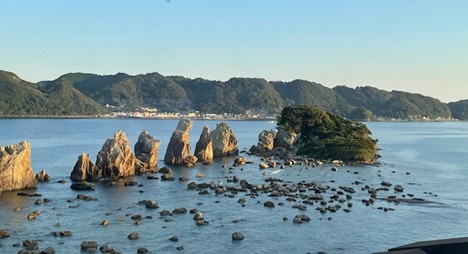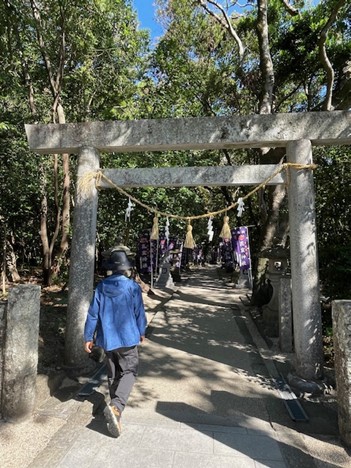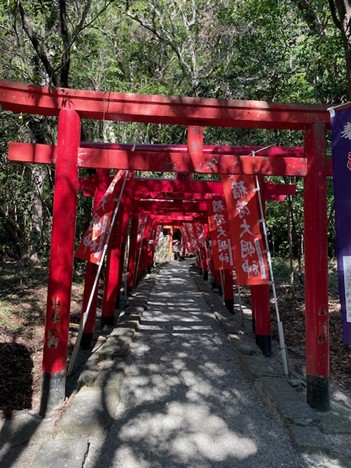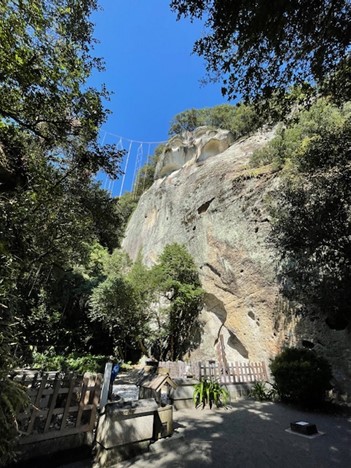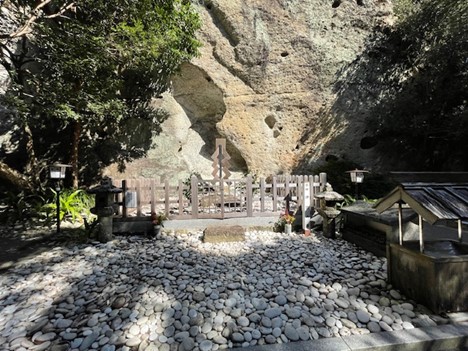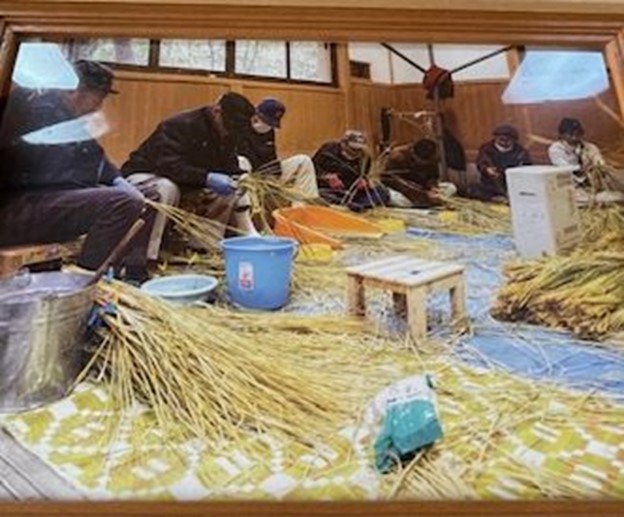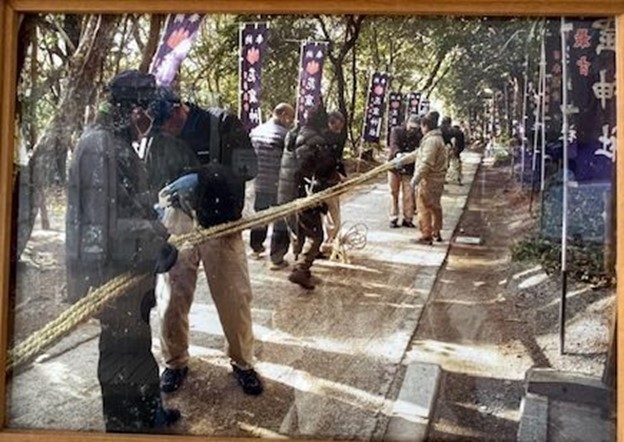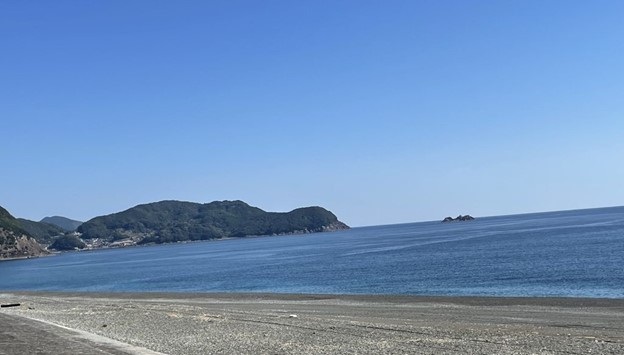.
On our way to Kushimoto (town on the most southern part of the Kii peninsular) we visited Fuderakusan-ji, a small Buddhist temple established more than 1000 years ago by an Indian monk. It is designated as an UNESCO Heritage site.
.
.
.
.
Temple nestled in a wooded area
.
.
.
A Shinto shrine beside the temple
The cultural importance of this temple goes back to a peculiar ritual called Fudaraku-tokai, meaning “crossing the sea to Fudaraku (Skt. Potalaka)”. Fudarakusan or Pure Land was believed to be an island south of Japan where Kannon, the Bodhisattva of Compassion, was thought to be living. Between the 9th and 18th century, 20 monks (usually of old age) tried to reach this land in order to deliver prayers for happiness on behalf of humanity. The boat, built like a shrine, had a little cabin for the monk to sit, meditate and pray. This cabin was sealed. A lamp and food for one month was given to him on his journey to Pure Land. On the internet I have read that some monks tried to escape their suicide mission. One monk was lucky. It happened in the 16th century. The boat was driven by wind and current to a group of Japanese islands and landed there. He believed that it was Fudarakusan. Ever since, the island carry the name of this monk, Konkobu (金光坊)-jima.
During the Edo period, the ritual was changed and only dead monks were sent out into the sea.
.
.
.
.
Replica of the boat with the little wooden chamber surrounded by four torii
.
.
.
.
The boat with the house – cabin in the center
The opening was sealed when the journey started.
.
.
.
.
.
We walked up the hill to the cemetery that had the names of the monks who took the journey to Fudarakusan.
In Kushimoto, Yuko had booked a hotel beside the beach with a fantastic view to a rock formation called Hashigui-iwa, the Bridge Pier Rock. This line of rocks is, like many places of natural wonders, connected with a legend.
.
.
.
.
Rising sun with view out of my hotel window to the lined rock formation caused by volcanic activity
The legend is connected with Kobo Daishi, the founder of Shingon Buddhism (8th century) who was also an excellent engineer. One time he visited Kushimoto and was asked by the locals to help them build a bridge to the next island. They had tried many times, but the monster Amonojaku had always destroyed their work. Kobo Daishi told them that he could not do that. However, the monster approached Kobo Daishi with the promise to help him by giving him the strength of 1000 horses – under one condition! He had to finish the work in one day and one night. Kobo Daishi agreed and was very good progress. Amonojaku became very worried and decided to cheat. Just before sunrise, he faked the crow of the rooster and Kobo Daishi stopped his work, believing that he had lost. Ever since, you only can see the unfinished bridge.
There is a similar story about a rock, the devil and the rooster in my home area in Austria. However, the contract was between God and the devil. The devil wanted to build a dam across the Danube and made a deal with God. He had to finish the dam before dawn. The devil nearly finished the dam when the rooster on the top of a church steeple (old churches often had a metal rooster on the top) started to crow and tricked the devil. The rock dam collapsed with only a bit left on the shore.
.
.
.
.
.
In order to reach the shrine connected with the rock formation, I had to walk along a road without a pedestrian path. For a long time, heavy traffic prevented me from crossing the road, until I found a short opening – very dangerous! Unfortunately, the modernization damaged (like in many other places I did pilgrimages) some of the natural beauty.
.
.
.
.
Entrance to the shrine from the busy street
.
.
.
.
.
When the dragon back
rises out of the calm sea
the gods ride on him
On the way to the Ise shrine, we stopped at another interesting place – the Hana-no-Iwaya shrine. I had no idea that this trip would be a cultural journey into the mythical history of Japan. It was fascinating!
.
.
.
.
Entrance gate to the Hana-no-Iwaya shrine
Hana-no-Iwaya is a giant, 47m high rock formation venerated since Paleolithic times. Many consider it as the oldest place of worship in Japan. It is connected to the creation myth of different kamis and the creation of Japan.
.
.
.
.
Many Torii indicating the sacredness of this place
Brother and sister Izanagi and Izanami are deities responsible for the creation of many deities and the creation of the islands of Japan. When Izanami gave birth to the fire god Kagutsuchi, she was burned and went to Yomi, the World of darkness. Izanagi was full of grief and looked for his wife in the Underworld. He found her and saw her rotten corpse. Terrified, he escaped the World of the death and placed a huge rock across the entrance, sealing the exit and breaking their union. After that, Izanagi took a bath in order to purify himself from the contact with the dead and gave birth to a number of important deities. His left eye was giving birth to Amaterasu (sun goddess), his right eye gave birth to the Goddess of the moon and the storm god Susanoo was born from his nose. The bathing is the foundation of the very important purification ritual.
.
.
.
.
.
On the top of the giant rock which closes the entrance to the Underworld, you see a shimenawa (mark rope) connecting to a sacred pole on the ground. This rope, consisting of 7 intertwined ropes, is made by locals every 6 months, connected with a rope changing festival followed by a sacred dance to the Gods.
.
.
.
.
.
In the photo you can see the shadow on the rock created by a depression called “Hotoana”, meaning hole in the rock. This 6m high formation is considered the sacred body of the deity.
.
.
.
.
This is a photo I made of a photo showing the weaving of the rope.
.
.
.
.
Rope festival
.
.
.
The Pacific Ocean is about a 5-minute walk from the shrine
.
.
.

